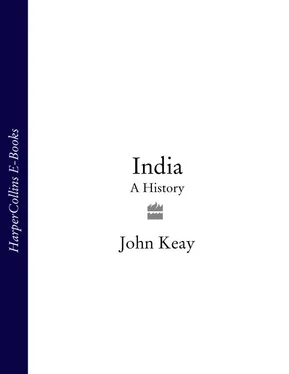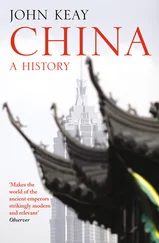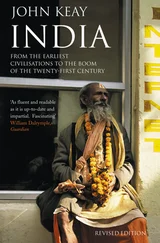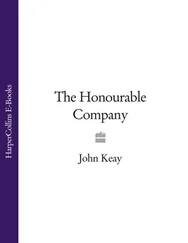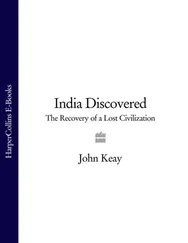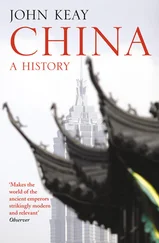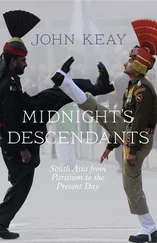INDIA
A History: From the Earliest Civilisations to the Boom of the Twenty-First Century
JOHN KEAY

Harper Press An imprint of HarperCollins Publishers 77–85 Fulham Palace Road Hammersmith London W6 8JB
www.harpercollins.co.uk
This updated Harper Press edition published 2010
First published in Great Britain by HarperCollins Publishers in 2000 Published in paperback by Harper Perennial 2004, reprinted 12 times
Copyright © John Keay 2000 and 2010
Maps and tables by Jillian Luff
John Keay asserts the moral right to be identified as the author of this work
A catalogue record for this book is available from the British Library
All rights reserved under International and Pan-American Copyright Conventions. By payment of the required fees, you have been granted the nonexclusive, nontransferable right to access and read the text of this e-book on-screen. No part of this text may be reproduced, transmitted, downloaded, decompiled, reverseengineered, or stored in or introduced into any information storage and retrieval system, in any form or by any means, whether electronic or mechanical, now known or hereinafter invented, without the express written permission of HarperCollins e-books.

Find out more about HarperCollins and the environment at
www.harpercollins.co.uk/green
Source ISBN: 9780007307753
Ebook Edition © APRIL 2013 ISBN 9780007382392
Version: 2014-12-01
For Tara
Title Page
Copyright
Dedication
Maps
Charts and Tables
Author’s note to the Second Edition
Introduction
1 The Harappan World: C3000–1700 BC
2 Vedic Values: C1700–900 BC
3 The Epic Age: C900–520 BC
4 Out of the Myth-Smoke: C520–C320 BC
5 Gloria Maurya: C320–200 BC
6 An Age of Paradox: C200 BC–C300 AD
7 Gupta Gold: C300–500 AD
8 Lords of the Universe: C500–700
9 Dharma and Defiance: C700–C900
10 Natraj, the Rule of the Dance: C950–1180
11 The Triumph of the Sultans: C1180–1320
12 Other Indias: 1320–1525
13 The Making of the Mughal Empire: 1500–1605
14 Mughal Pomp, Indian Circumstance: 1605–1682
15 From Taj to Raj: 1682–1750
16 The British Conquest: 1750–1820
17 Pax Britannica: 1820–1880
18 Awake the Nation: 1880–1930
19 At the Stroke of the Midnight Hour: 1930–1948
20 Surgical Procedures: 1948–1965
21 The Spectre of Separatism: 1962–1972
22 ‘Demockery’: 1972–1984
23 Midnight’s Grandchildren: 1984–
Bibliography
Index
About the Author
Source Notes
Praise
Also by the Author
About the Publisher
South Asia – Physical
South Asia Today
The Harappan world C1900 BC
Northern India at the time of the Buddha (C400 BC)
Alexander the Great’s invasion, 327–6 BC
India under Ashoka
The Karakoram route
Peninsular trading stations in the first century AD
Western India C150 AD (with Shatavahana cave-sites)
Gupta conquests
Harsha’s probable empire C640 AD
Chalukyas and Pallavas in the seventh century
India and south-east Asia in the seventh to twelfth centuries
The Arab conquest of Sind in the eighth century
The Kanauj triangle: Rashtrakutas, Palas and Gurjara-Pratiharas
The land of the Shahis C1000 AD
The Ghaznavid empire under Mahmud of Ghazni C1030
The Chola kingdom C1030 and the expeditions of Rajendra I
Avanti/Malwa: the incarnations of a proto-state
Chahamana defeat and Muhammad of Ghor’s conquests 1192–1200
Eastern India C1200
The peninsular incursions of Ala-ud-din and Malik Kafur, 1296–1312
Delhi old and new
The stillborn states: India in the fifteenth century
The campaigns of Babur, Humayun and Sher Shah
The Bahmanid kingdom and its successor sultanates
Expansion of the Mughal empire, 1530–1707
Rajasthan under the Mughals
The Deccan and the south in the reign of Aurangzeb
Successor states of the Mughal empire
European trading stations C1740
The peninsula in the eighteenth century (the Anglo – French and Anglo – Mysore Wars)
The British in Bengal, 1756–65
British India in 1792, after the Third Mysore War;
British India in 1804, after Wellesley’s acquisitions
The Anglo-Maratha Wars 1775–1818
British India in 1820, after the Maratha Wars
British India in 1856, after Dalhousie’s annexations
The north-west in the nineteenth century: British expansion into Panjab, Sind and Afghanistan
Northern India during the Great Rebellion 1857–8
The partition of the Panjab, 1947
The peaks and troughs of dominion
The Mauryas: probable succession 321–181 BC
The imperial Guptas: probable succession
The Chalukyas and the Pallavas: the rival successions
The rise and fall of the Cholas of Tanjore
Avanti/Malwa: the incarnations of a proto-state
The Delhi sultanates. 1: The ‘Slave’ Dynasty, 1206–90
The Delhi sultanates. 2: The Khalji Dynasty, 1290–1320
Muslim conquest to Mughal empire: the dynasties of the Delhi sultanate
The Delhi sultanates. 3: The Tughluq dynasty, 1320–1413
The Great Mughals
Intermarriage of Great Mughals with the family of Itimad-ud-Daula
The Sikh Gurus: the chosen successors of Guru Nanak
The royal house of Shivaji (Bhonsle Chatrapatis)
The later Mughals
Succession of the Peshwas of Pune
British governors-general
British viceroys
Countdown to Independence
The Nehru-Gandhi dynasty
Political Succession in India, Pakistan and Bangladesh 1947–2009
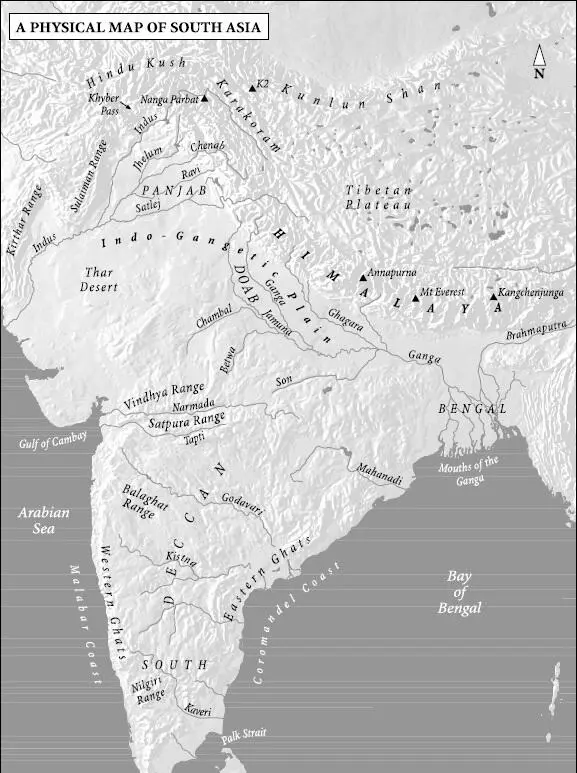
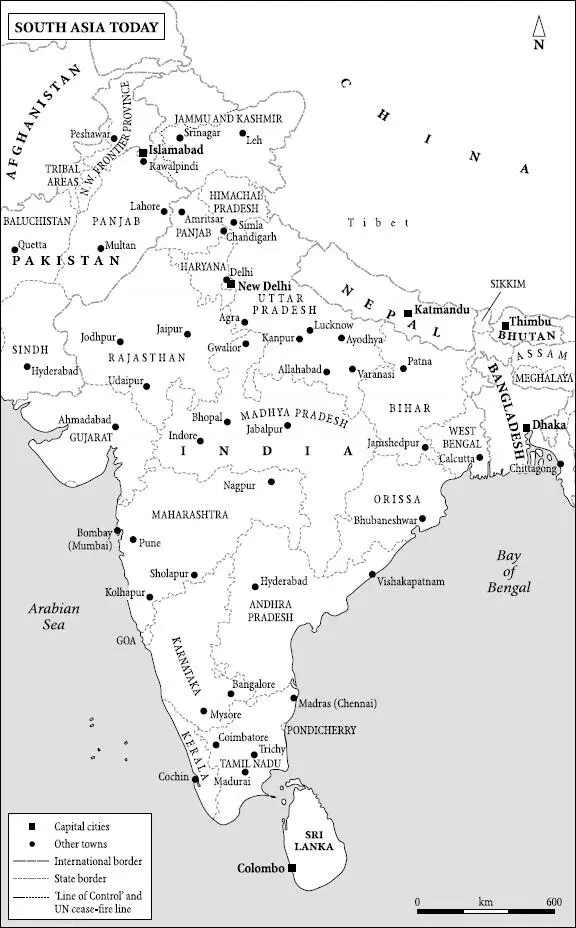
AUTHOR’S NOTE TO THE SECOND EDITION
When this book was first published in 2000 I had it in mind to write a sequel that would recount the events of the last fifty years in greater detail than was possible in a 5000-year history of the subcontinent. That project is at last under way. But working on it has made me even more aware of the cursory and selective nature of the final chapters in the first edition of India .
Ten years on, therefore, this new edition endeavours to make amends. As well as some updates and corrections to the original text, it contains an extensively rewritten chapter 19, a replacement chapter 20 and completely new chapters 21, 22 and 23. The narrative has been extended into the twenty-first century and an attempt made to compare the fortunes and explore the fraught relationships of all three of the post-Partition states – Pakistan and Bangladesh as well as India.
To anyone over sixty this will be more current affairs than history. It deals with events and personalities that may be familiar and it invites a more engaged and subjective treatment. Sadly it also lacks the authority that stems from a longer scholarly perspective. Much vital documentation remains unavailable for reasons of confidentiality or national security. Access to Pakistan’s national archive, for instance, is so restricted that most histories of that country rely heavily on such documentation as can be consulted elsewhere, notably in the UK and the USA. Yet over-dependence on the reports and correspondence of foreign diplomats and observers may give a very false impression of decision-making within Pakistan’s ruling establishment. Contemporary history is partial – in every sense. The new chapters at the end of this book are no exception.
Читать дальше
